November 25, 2014
Vitrine
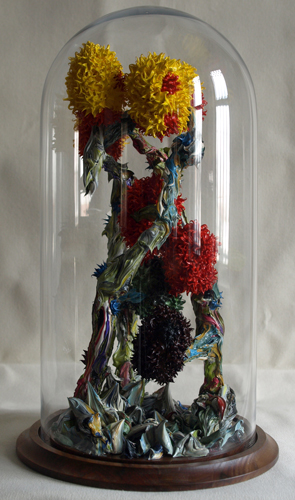
We are all one or the other
2014
#479
20"x12"diameter
Oil on Wood Armature under Glass Vitrine
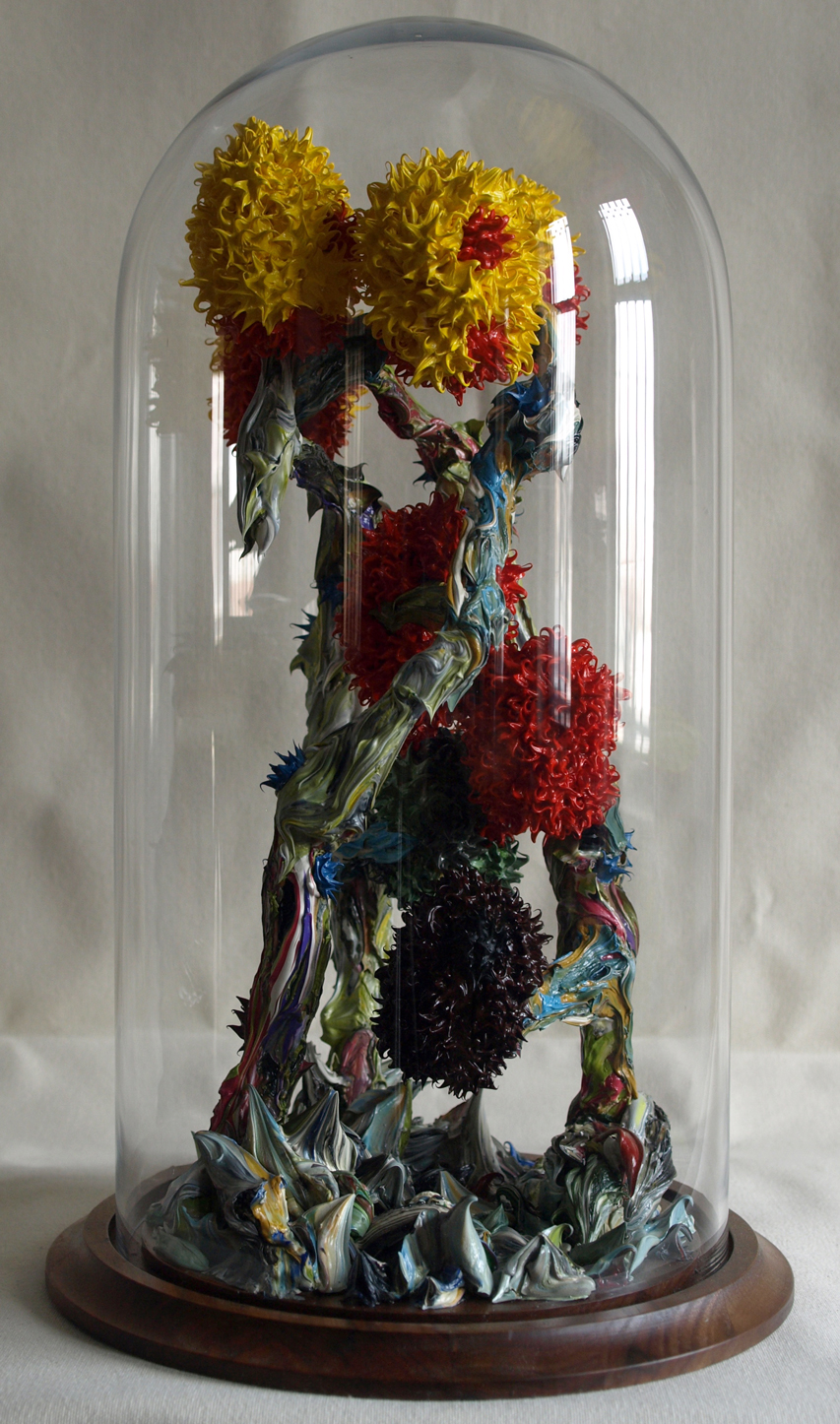
Paintings 2013
This is a presentation of paintings from 2013. Sizes of the following images are relative.
Click on the image for enlarged images in the original blogpost of each painting.
Paintings and works on paper for 2013:
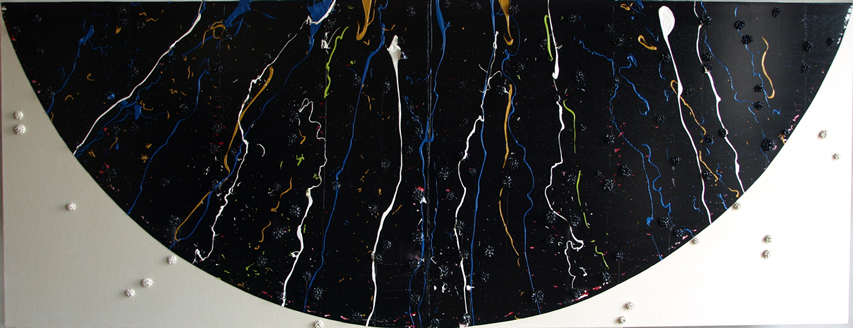 /a>
/a>
"something that I had known before but only dimly so"
#439
2013
36"x96"
*
*
*
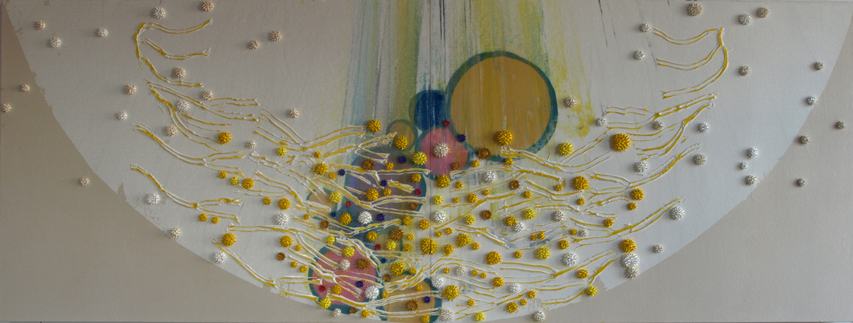
unguarded, unabashed love
2013
#432
36"x96"
*
*
*

The Mercurial and the Brave
#436
2013
12"x5"diameter
*
*
*
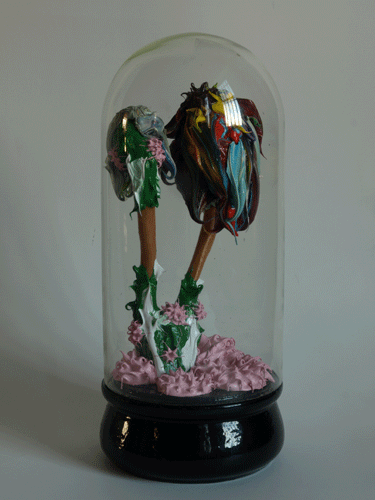
Olympos, the home of the gods
#435
2013
12"x5"diameter
*
*
*

Avidly and Naturally
#434
2013
12"x5"diameter
*
*
*
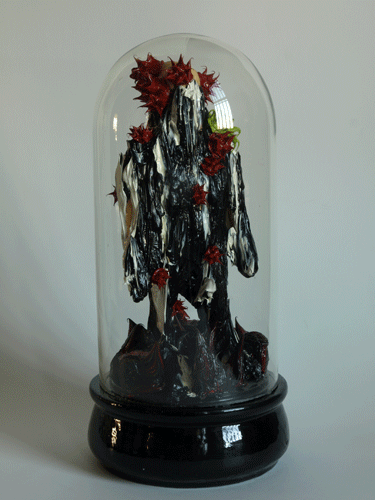
The Dialectics of Zeno
#433
2013
12"x5"diameter
Oil on Wood Armature, Glass Vitrine
*
*
*
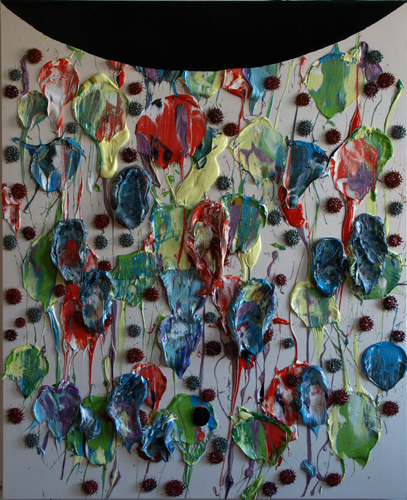
Cast Out of Olympus
2013
#431
60"x48"
*
*
*
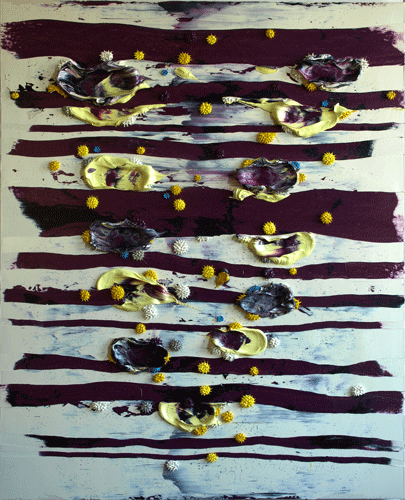
Silent Veto
2013
#430
60"x48"
*
*
*
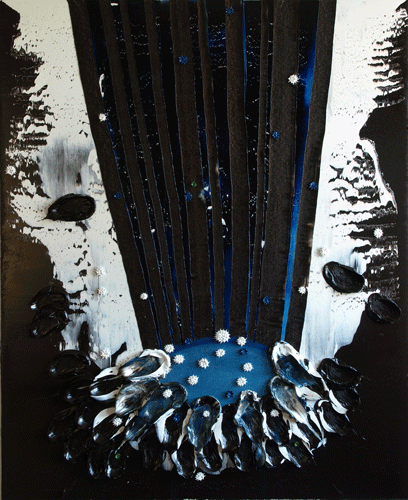
Beyond Reason
2013
#428
60"x48"
*
*
*
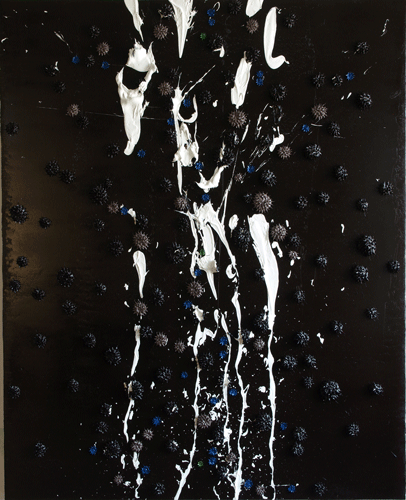
Beyond Measure
2013
#427
60"x48"
*
*
*
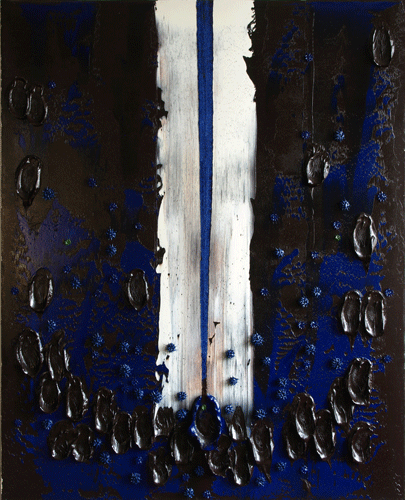
Beyond Redemption
2013
#426
60"x48"
*
*
*
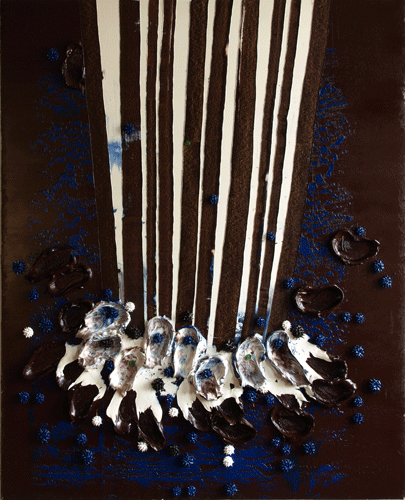
Beyond Belief
2013
#425
60"x48"
*
*
*
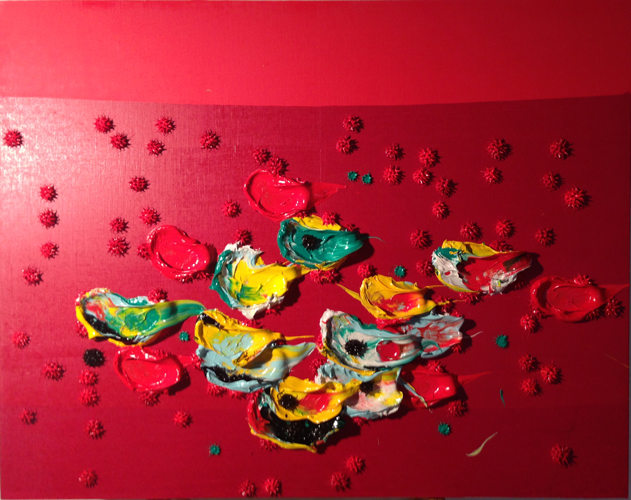
1000 Talentos
2013
#424
122x196cm
*
*
*
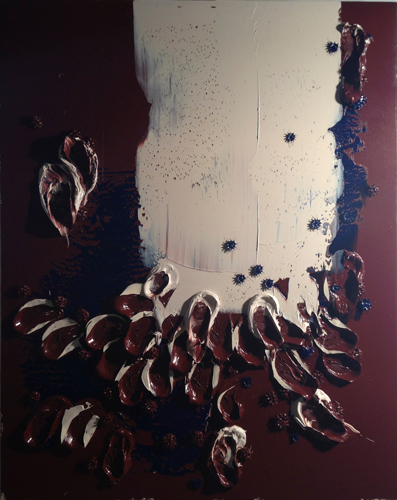
Más allía de
2013
#423
122 x 96 cm
*
*
*
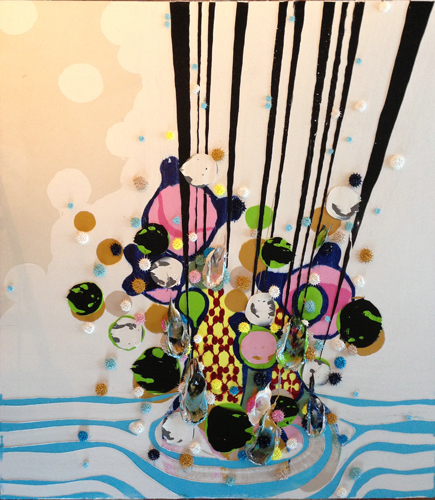
Second Creation
#422
2013
71"x63"
*
*
*
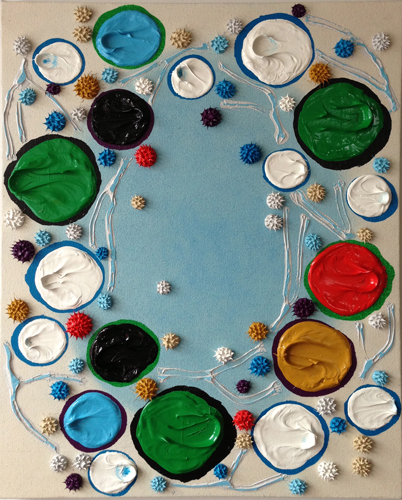
Plumes
2013
#421
30"x24"
*
*
*
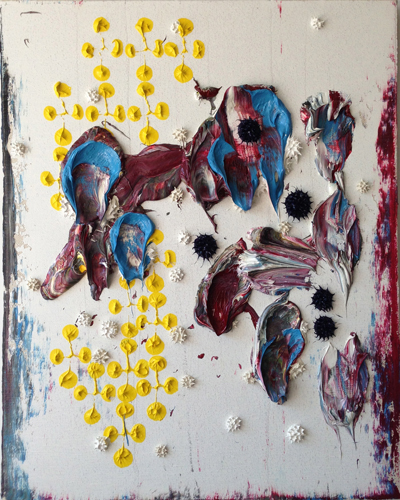
once a cold mountain stream
2013
#420
30"x24"
*
*
*
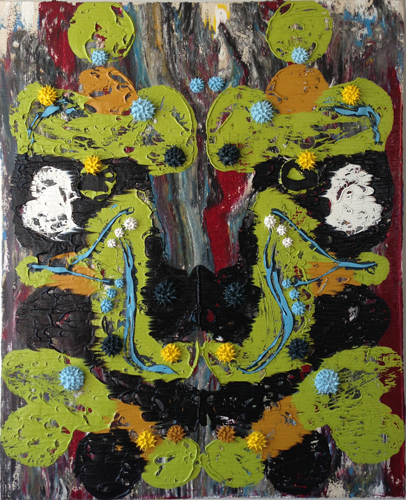
trying to touch G-d
2013
#419
30"x24"
*
*
*
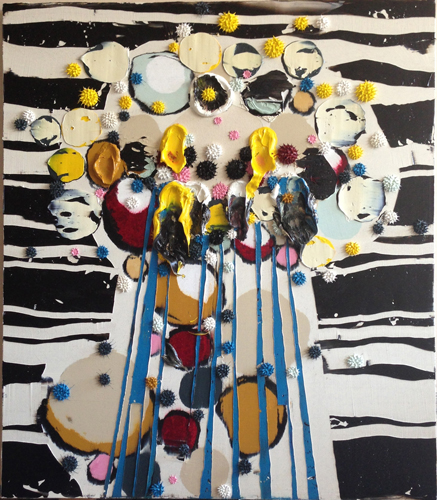
Make Me Iliad
#418
2013
48"x42"
*
*
*
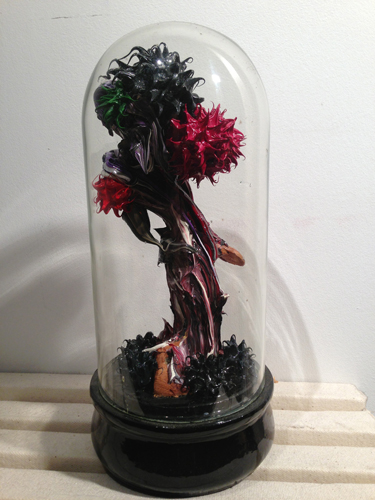
and the stranger escaped out the window
#417
2013
12"x5"diameter
Oil on Wood Armature, Glass Vitrine
*
*
*
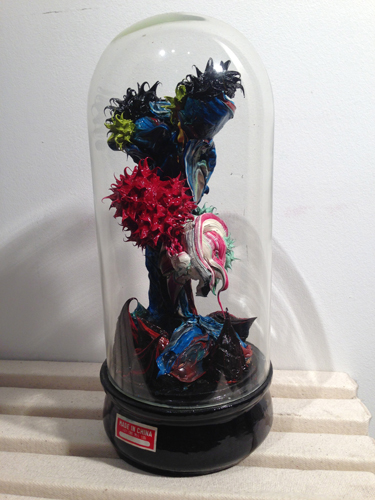
en cada una de ellas
#416
2013
12"x5"diameter
Oil on Wood Armature, Glass Vitrine
*
*
*
< a href="http://www.dennishollingsworth.us/archives/002935.html">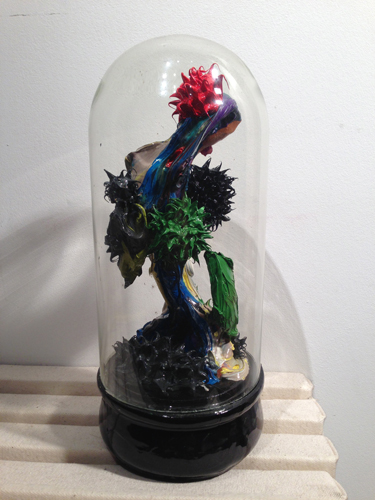
the ultimate manifestation
#415
2013
12"x5"diameter
Oil on Wood Armature, Glass Vitrine
*
*
*
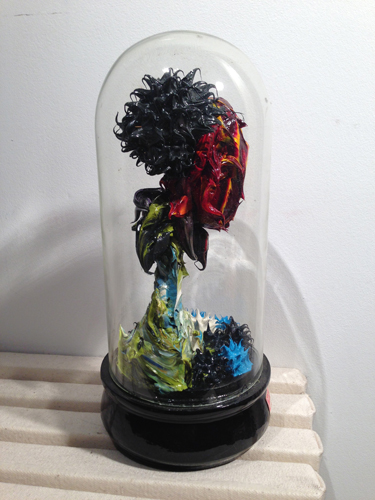
so many chimeras
#414
2013
12"x5"diameter
Oil on Wood Armature, Glass Vitrine
*
*
*
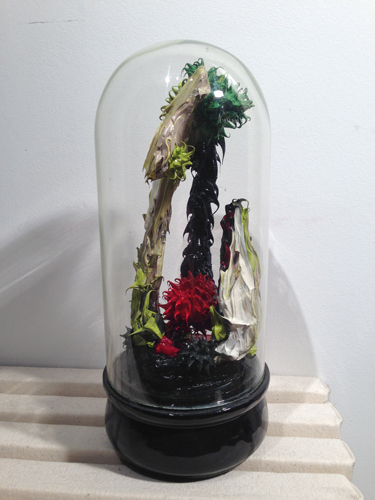
imagine the power
2013
#413
12"x5"diameter
Oil on Wood Armature, Glass Vitrine
*
*
*

Share the Joy
2013
#412
40"x30"
*
*
*
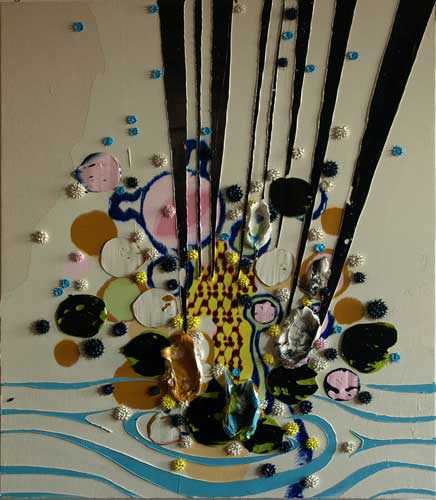
Creation Story
2013
#411
48"x42"
*
*
*
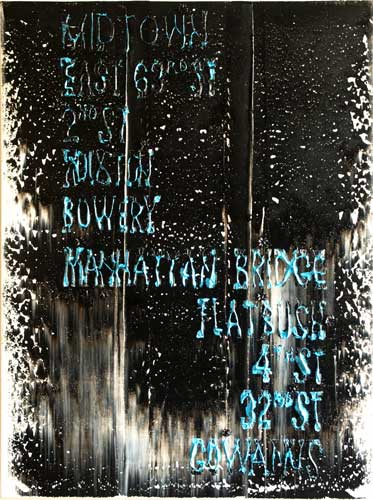
45 Minutes on a Good Day
2013
#410
40"x30"
Paintings 2012
This is a presentation of paintings from 2012. Sizes of the following images are relative.
Click on the image for enlarged images in the original blogpost of each painting.
Paintings and works on paper for 2012:
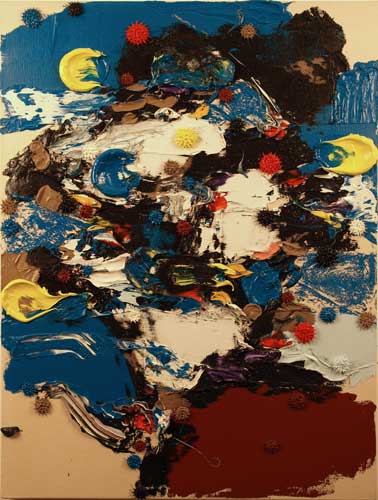
golden brown
2012
#409
40"x30"
*
*
*

enfolded, hidden?
2012
#408
40"x30"
*
*
*
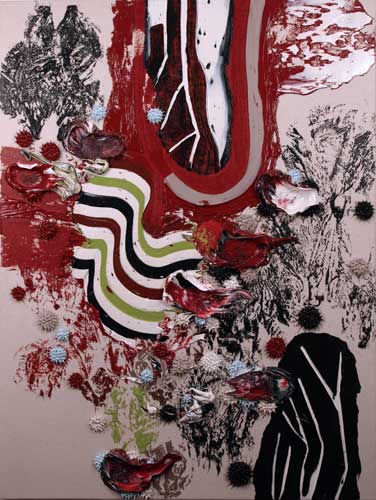
Lest We Forget
2012
40"x30"
*
*
*
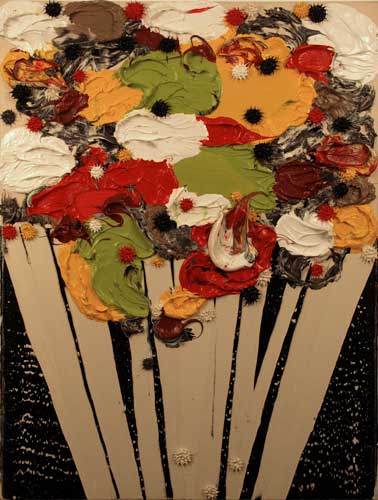
Prelude
2012
#406
40"x30"
*
*
*
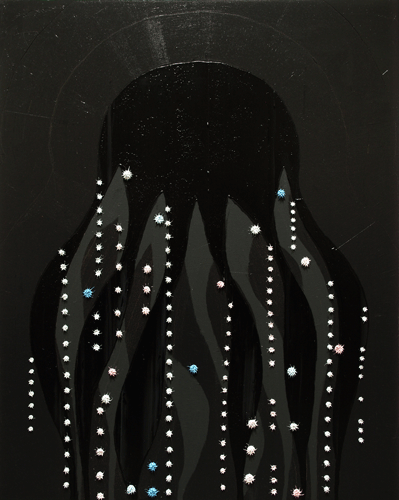
loyal opposition
#405
2012
60"x48"
*
*
*

infectious
#404
2012
60"x48"
*
*
*
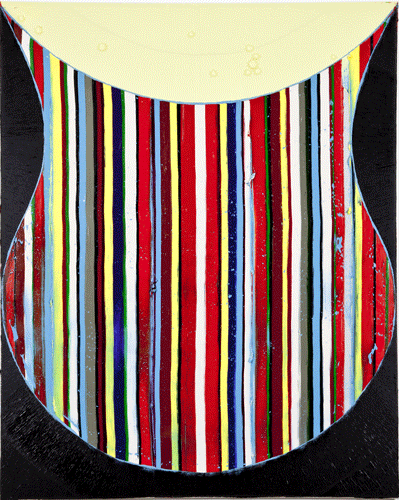
humbly small, impossibly large
2012
#403
60"x48"
*
*
*
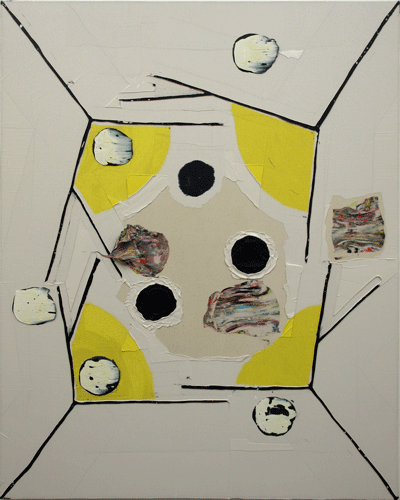
Plasma Indirection
2012
#402
60"x48"
*
*
*
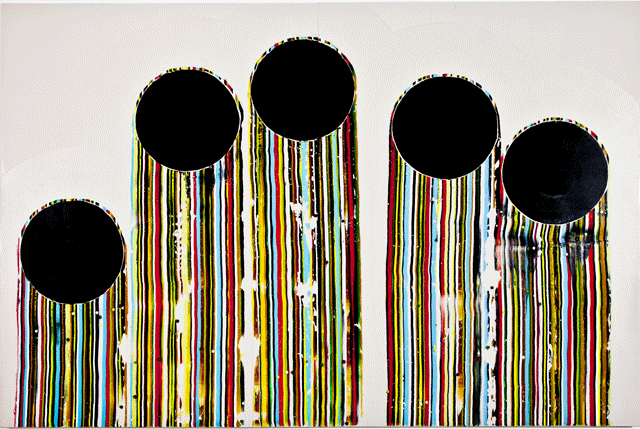
A Blessing
2012
#401
8'x12'
*
*
*
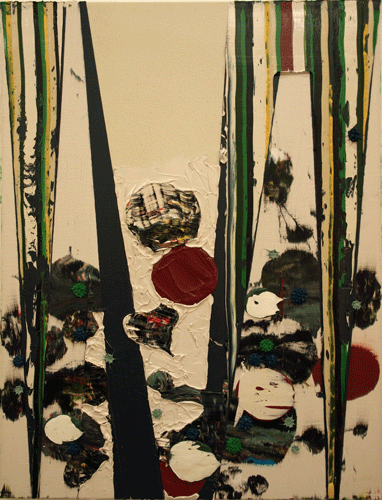
re-evolution
#400
40"x30"
2012
*
*
*
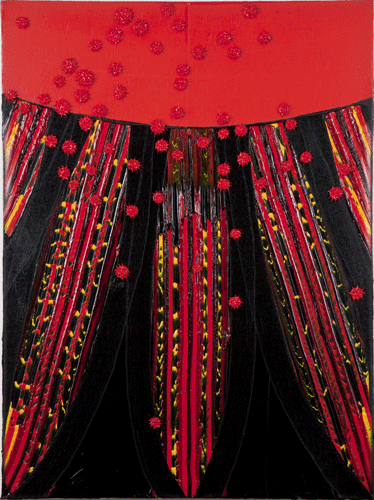
Terrestrial
2011
#399
40"x30"
November 23, 2014
I contain Multitudes
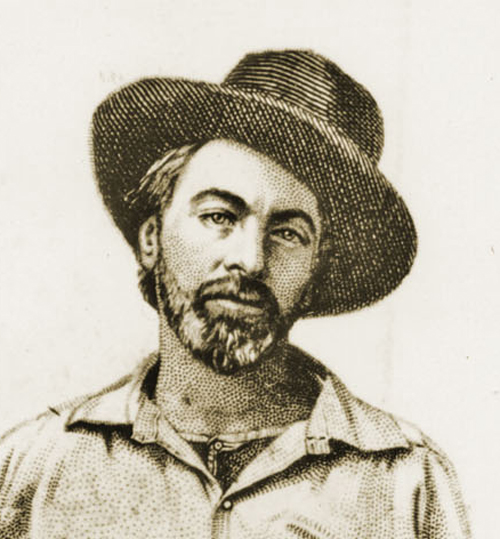
When I was a grad student now so many years ago, a gallery owner/art dealer was touring the art school's studios, long before such a practice was the fashion, the days of robbing cradles was soon to come. She offered a sly critique. Knowing that my background included architecture in the narrative, she said: "I don't see architecture in your paintings."
Where is the architecture, indeed? Does it need to be expressed when it is integral within me?
By that time, architecture constituted ten years of my life: an education, apprenticeship, practice and licensure. At such depths, architecture is more than rectilinear formalism or some such other popular indication of its' existence. Painting has been described as a two dimensional relationship to the viewer and sculpture a three dimensional one, architecture is a four dimensional movement as a person moving processionally outside and inside a constructed experience. Architecture as taught in the university is about the integration of a mountain of data using skill and wisdom to abstract this data into parti and schema and then into a interrelated systemic complex in concert. Medicine mirrors this in reverse in the way we see the human body as an abstraction of various systems, nervous, digestive, muscular, skeletal, immune, etcetera. So, what is the formal indication of architecture, when you hold these descriptors in mind? Whatever it is, it is not a simple one.
The expression of identity is a popular touchstone in contemporary art. The problem with much of this celebration of identity today is the overwhelming tendency towards simplistic reduction. Reduction in and of itself isn't a problem when it is a crystallization of facets into a singularity that bears the overtones of the multitude within the singularization. But this is rare phenomena. When it occurs, such as the popular characterization of epochs, the Victorian era for example, much of the countervailing narratives are concealed in the popular understanding of the nature of that segment of history. Such reductions are useful at large scales when we hold the exceptions at abeyance, understanding the work such intellectual instruments are meant to perform in a certain context. Much of the work of higher education is about raising the awareness about the crudity of these large scale abstractions, thus creating the possibility of creating better ones while maintaining an awareness -hopefully- of the violence any such abstraction does to countervailing narratives. Unfortunately, our universities often fail to achieve the latter objective.
Who am I? I'm an artist. A painter. Is that a reduction to some ears? Then I'm an artist who paints. I am an architect, to be sure. I was determined to secure a license so as to drive a piton into the cliff of my first stage of education before I moved on to the second stage, an art education proper. Before that, I was a sailor. I was a fleet sailor who steamed in the Pacific and Indian Oceans for five years. Before that, I was a "military brat", my father was first in the Army, then in the Air Force. We lived in various military bases around the world: Philippines, New Mexico, Panama and Las Vegas being only part of a longer list. Add to this... litany, I'm bi-racial. My Filipino grandfather sent his kids to Madrid to study, my father (born in Texas, raised in Missouri) was stationed in Torrejón air base when he met my mother and there in Madrid I was born.
All the preceding was what I was.
After all this, what am I... who am I, exactly?
Are we only what we were? Are we merely the sum of who we were? Am I a Mestizo+Spaniard+Military Brat+Sailor+Californian+Architect+Artist+Painter+New Yorker? Each and all of us are aggregates. But this is so static, so linear, so... arithmetical. Are we mere sumations? Are we so constrained by our past? Then how could be, in so many different identities, anyone at all?
What if we are instead, algebraic? What if who we were can be altered, can be dynamically altered, by who we will be? "Who am I?" becomes modified into "Who am I now?". And now? And now? And now? Are who we are at any given instant, a variable whose value is contested by an algebraic equilibrium between who we were and who we will be?
Overtones of the Multitude
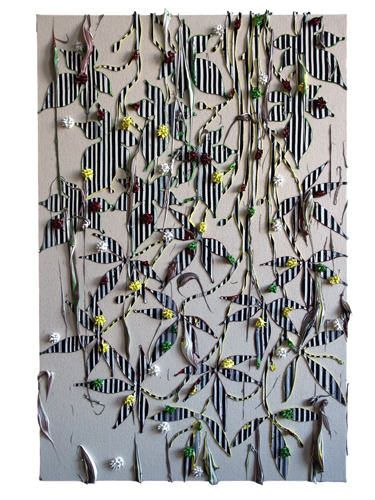
Overtones of the Multitude
2014
#478
30"x20"
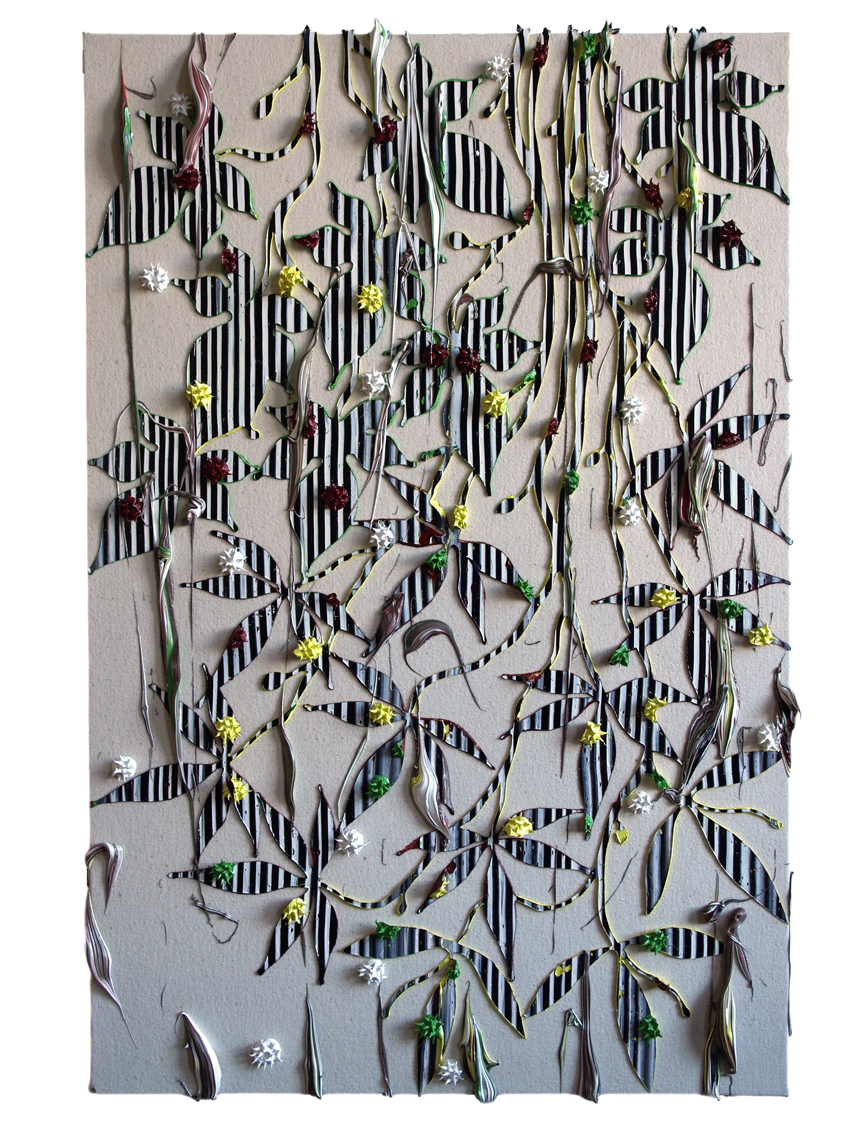
Penrose on Consciousness, Truth, Morality and Beauty
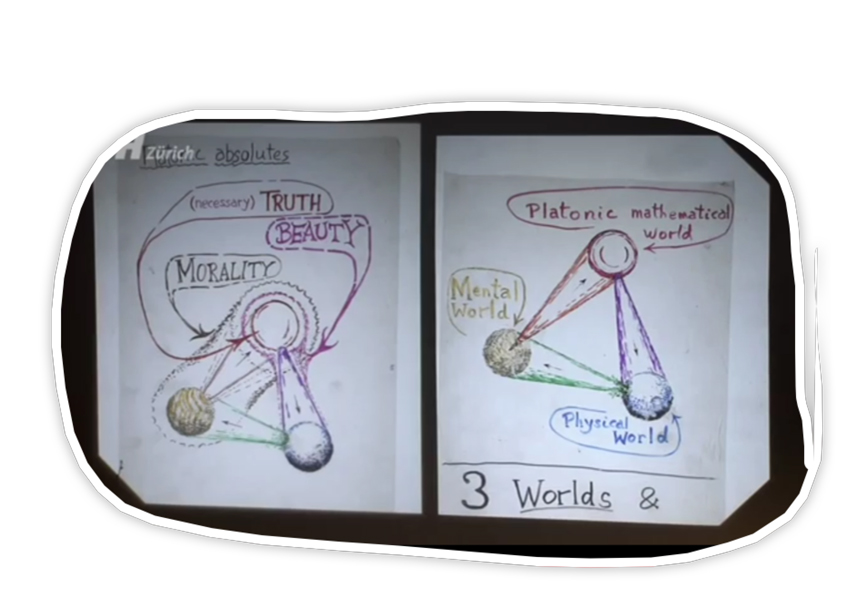
I'd like to make a list of thinkers who are not usually constrained by their discipline Today, the list starts with Roger Penrose, then Richard Feynman...
Well, not many folks that I can add to the list at the moment.
Penrose gave a lecture a couple of years ago in Zürich, you can see it here, or below the fold. In this presentation, Roger Penrose is searching for clues to the basis of consciousness, in this presentation, he traces the current extents of our understanding of this ultimate subject to the limit. Penrose eventually presents in this talk, a schematic structure of the world at large, a world itself composed of three worlds, three mysteries: the physical, mental and Platonic (which the latter is too, tripartite: Truth, Beauty and Morality)
Time = 0:51:30, Penrose introduces to the "3 Worlds & 3 Mysteries"
He returns to this theme at Time = 1:08:00
In his presentation, he brings in quantum physics, Heisenberg's Uncertainty Principal, the limits of computation and the larger realm of mathematical truth, among many other issues. Between the two moments in the video time tagged above, Penrose introduces the recent discovery of microtubules within neurons which are so small as to provides a space for quantum effects to take place.
...one of the things that one keeps finding in research and mathematics and physics at a particularly at the deep level where mathematics tends to come in at relatively profound ways, and this is, the beauty of the subject. So I have here, gone a little outside of my area and [I talk] about the other Platonic absolutes.You see, this world has to do with truth, this has to do with absolute truth, the absolute truth that you find in mathematics, which has a sort of more absolute nature that you tend to find in other areas, but there are these other Platonic qualities, not necessarily the Truth, which is indicated by this part [referring to his diagram] but Beauty, particularly the beauty that one finds in physical laws or how mathematics applies to it, there is often beauty which is mathematical, but so often, more than not, you find that the -laws that apply to the world involve, in a deep way, this Beauty.
The final thing, which in fact is what Plato regarded the most highly, which was the morality or The Good. And this is clearly tied up with mentality, because if you want to talk about something, some act being good in some sense, it usually refers to animate creatures, human beings, not just human beings certainly... so the idea of morality is very much tied up with this side of the picture....
it does seem to me that it's not just the Truth that you find in this world the Platonic Absolute which is relevant in this picture, that these others that the quality of Beauty which has to do with these physical laws that describe the world in the incredible way...and Morality, which has to do with Mentality
Does abstract art describe this Platonic tripartite of tripartite mysterious worlds? Not necessarily (and it's not that devotees of abstraction always make this promise, see Chris Martin's recent Everything is Finished Nothing is Dead: An Article About Abstract Painting)
, it merely steers us toward Truth and Beauty, on a path that promises to be shorn as much as possible of mimesis. Does verisimilitude get a bum rap in Plato's book because representation is an artifact solely of the Mental World, and therefore can keep us from properly apprehending the Platonic realm? Yes of course, this is the point of the Allegory of the Cave. The problem for the allegory is that we, as prisoners, are denied freedom in this life, this existence. The chains never come off while we are alive at least. The best we can do is
to try to make mental leaps like this: 4th Dimension explained.
PS: Another thinker who has drawn the dotted lines which anticipate the Platonic World would be Kurt Gödel. Mathematical fan Gary Geck has dramatized a reading of Gödel's undelivered 1961 lecture: The Modern Development Of The Foundations Of Mathematics In The Light Of Philosophy
November 17, 2014
tiny moments unnoticed by most
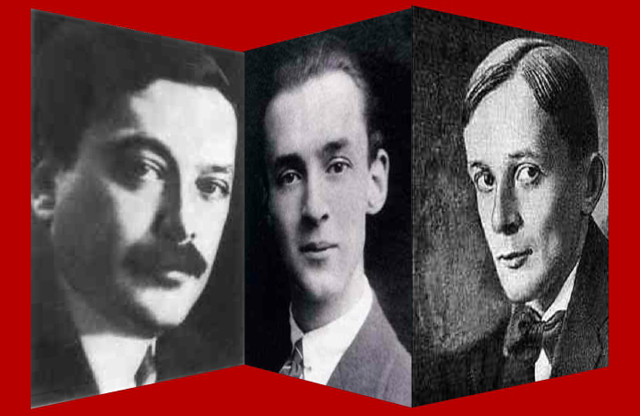
I listen to audiobooks all the time.
The current one is a biography of Vladimir Nabokov. This, after listening to Jeremy Irons' reading of Lolita, how wonderful that was, is and always will be.
This is a transcription from rom The Secret History of Vladimir Nabokov by Andrea Pitzer. This scene offers a key to Naboov's sub rosa strategy, I've bolded it for emphasis.
Audible audiobook 1 of 2, 6:53:34
(To set the scene, the Nabokovs have been emigres on the run for what seems their whole life as Russia, then Germany, then Europe crumbles under their feet. Nabokov is about to switch to writing in english as he prepares to move to the USA. Everyone mentioned, I imagine, is yet in the initial arc of their careers. Young, in other words.)
"...Nabokov played an elaborate practical joke on Georgy Adamovich, the critic who so consistently dismissed his verse. Writing poems under the pseudonym of Vasili Shishkov, Nabokov managed to get them published in a leading journal. They were praised by Adamovich, who had no idea that Nabokov had written them, as heralding the arrival of a great poet. A Nabokov short story titled "Vasiliy Shishkov" appeared months later in the same publication. Describing a retiring, gifted poet of the same name, who meets with the narrator twice before vanishing, the pseudonymous poems, combined with the story, which was signed by Nabokov in such a way to make it apparent that the whole thing had been a ruse to appear to prove that Adamovich was unfairly prejudiced against Nabokov's work. With characteristic irreverence, Nabokov was delighted with his trap, which had succeeded perfectly in revealing his critic's bias against him.
But Mark Aldanov chided Nabokov for his gamesmanship, pointing out that while he had been busy playing pranks, a war was underway. Vasili Shiskov seems to represent Nabokov at his most mean spirited and superficial. A tremendous amount of work and literary space were given over just to show someone up and the story's lone trick worked only in combination with the pseudonymous poems. But Aldanov was wrong. Even in apparent trifles, Nabokov was attending to the war. Each time the narrator ostensibly holds meetings with the invented poet in the foreground of the story, a group of German-Jewish refugees appears in the background, discussing the challenges of French identity papers and expressing anxiety over problems with their passports.
Behind the main story, Nabokov had folded in the imminent peril of the refugee Jews. In the story, the imaginary Shiskov describes his literary technique for the narrator: "...a deliberate avoidance of boring approaches to big, burning questions addressed by everyone in favor of attention to tiny moments unnoticed by most, trivia that carries embryos of the most obvious monsters...." The line was almost a literary mission statement of Nabokov, an explanation of what he had been doing in recent years with historical concerns, camps and prisons that haunted his work. But any subtle message the story was overshadowed by its high concept prank. Even before his shaming of Adamovitch, Nabokov had intended to say goodbye to the Russian emigre community with its revolutionary socialist revolutionaries, its scheming monarchists and spy networks.
November 16, 2014
Does Painting Endure...?
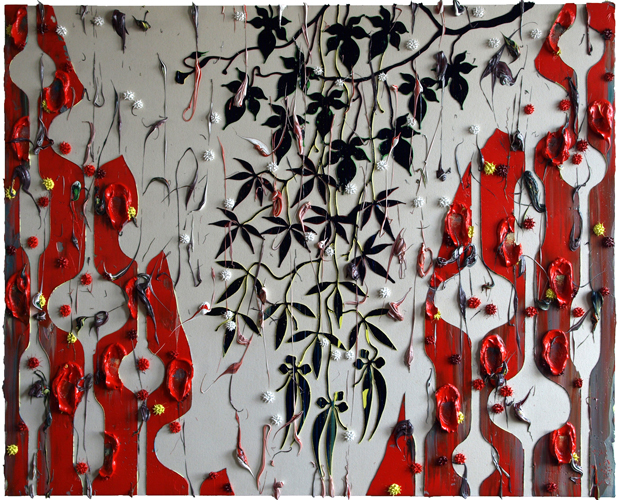
Does Painting Endure...?
2014
#477
Oil on Canvas over Wood Panel
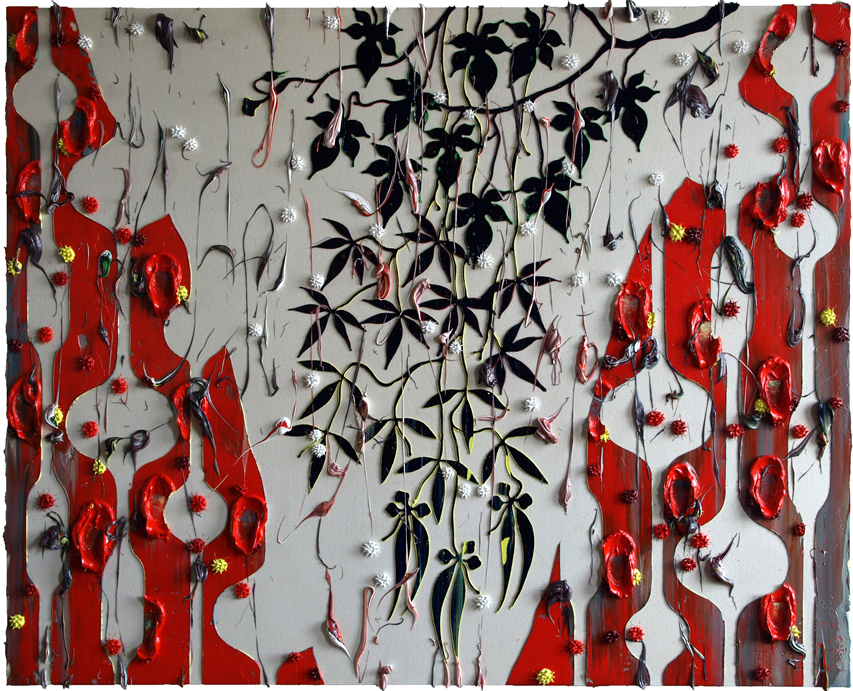
November 15, 2014
...when I see it, I'll tell you what I think.
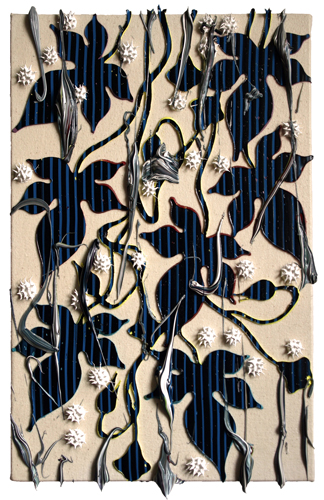
...When I see it, I'll tell you what I think.
2014
#476
18"x12"
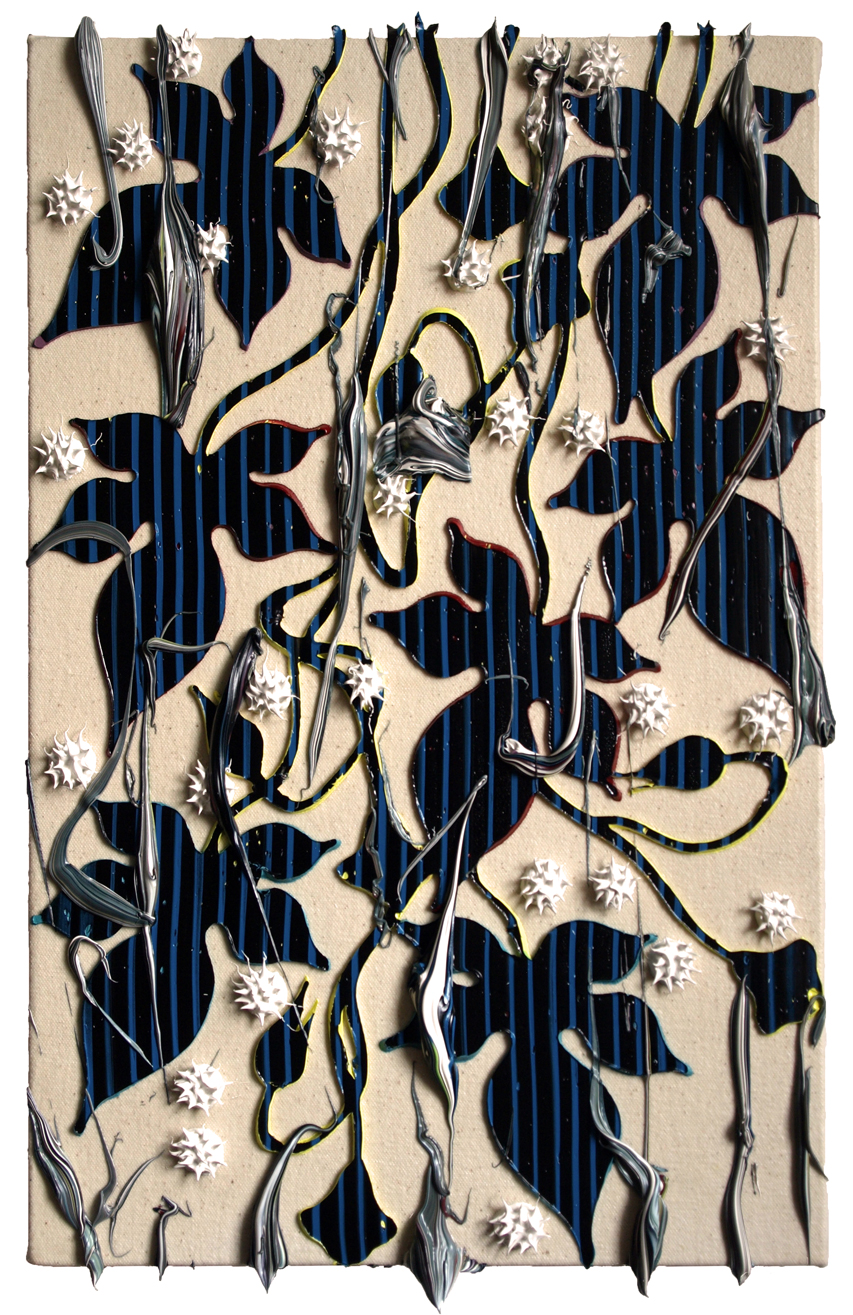
Paris, LA: East of the Sun
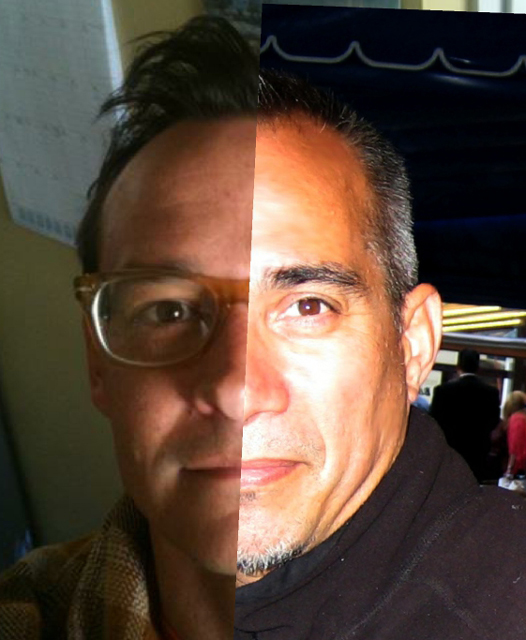
Paris,LA Magazine's #12 Fall issue is out (you can order it here) and the first article is "East of the Sun, An Indeterminate Approach to Architecture, Adam Janes and Dennis Hollingsworth in conversation".
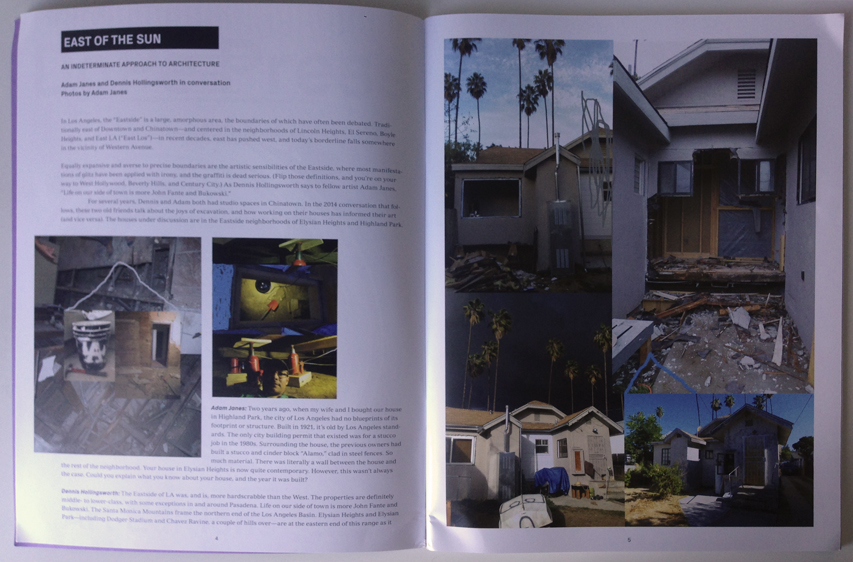
Several months ago, Adam and I exchanged emails about homesteading, architecture and making things at house-scale in our own humble pieces of SoCal garden paradise. Our experiences are separated by about twenty years, and we are distinctly different artists, but we both have a regard for the art of architecture... or is it the architecture of art?
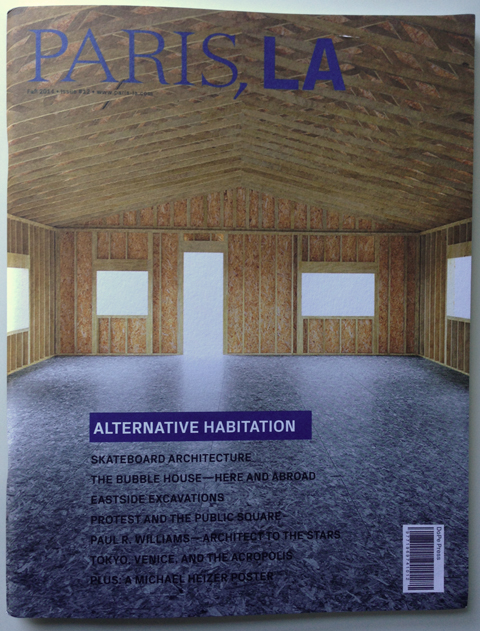
November 12, 2014
A Lingering Dream
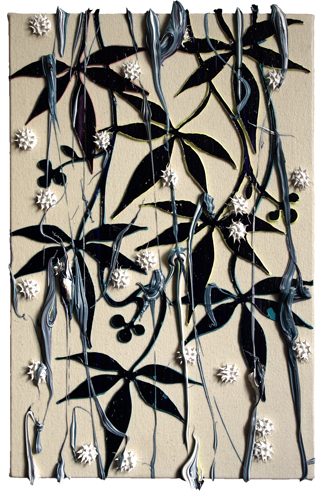
A Lingering Dream
2014
#475
18"x12"
Oil on Canvas over Panel
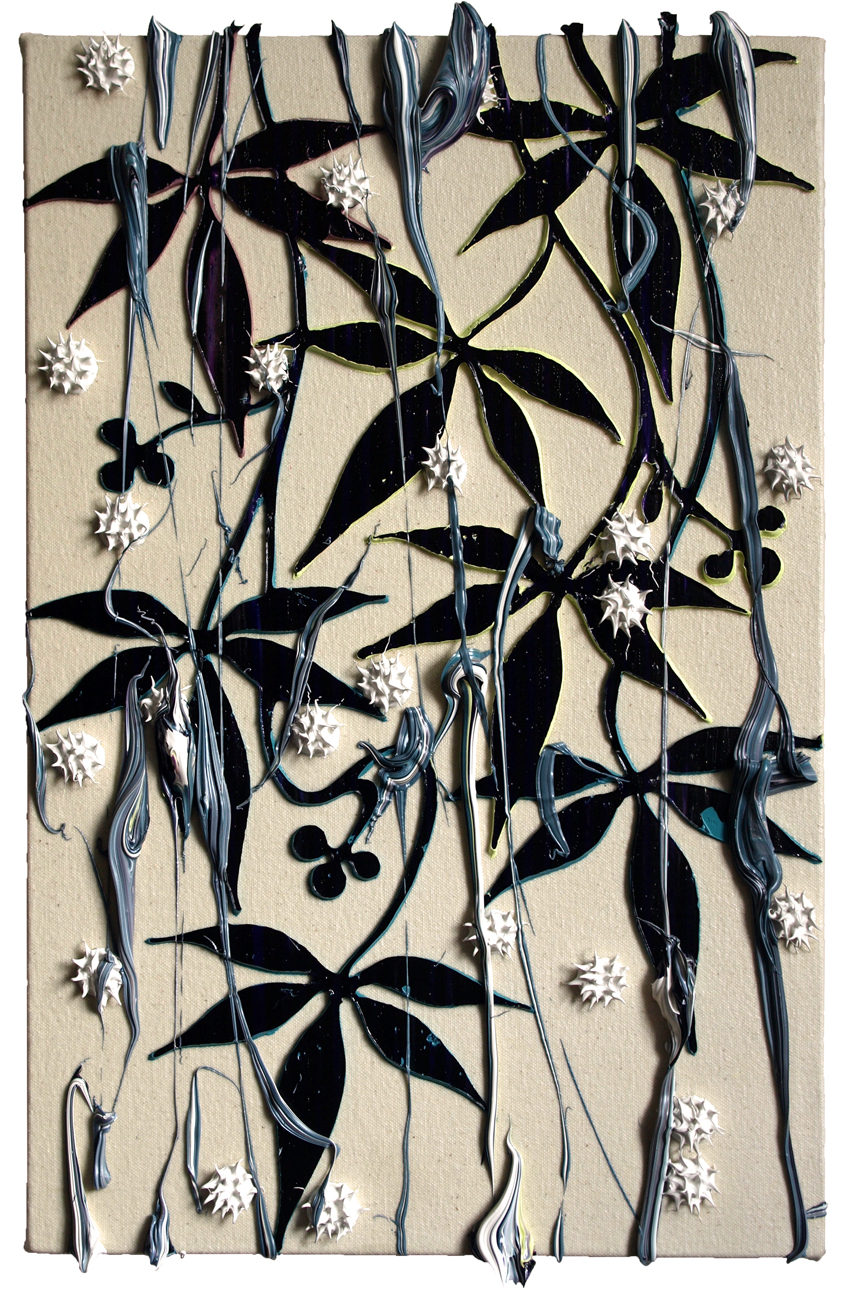
Alice Aycock Lecture at the NY Studio School
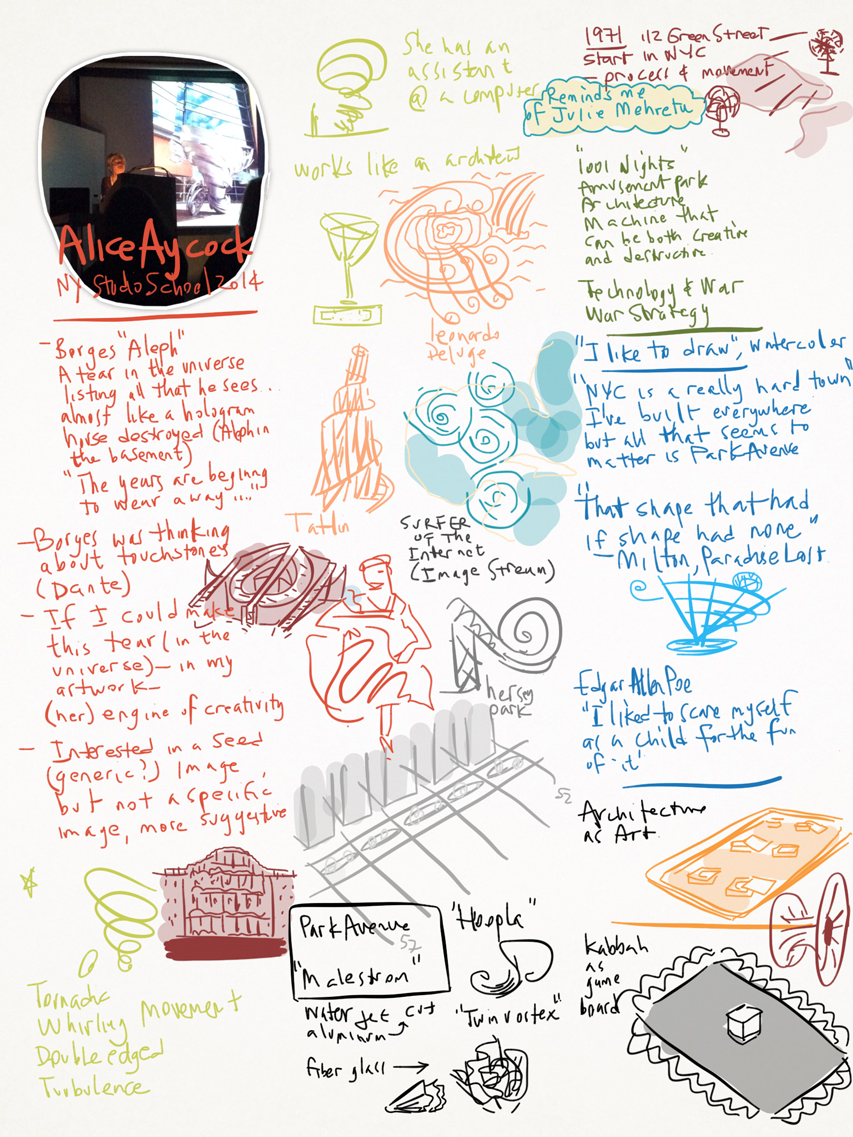
Alice Aycock presented her oeuvre at the New York Studio School last night.
Aycock was a huge influence on me when I was an undergraduate architecture student. Her work showed me out of the box canyon of architectural practice education which emphasizes a design solution as a Venn diagram resultant of client/site/regulation... Aycock reminded me then that a fourth domain needed to be in the mix: the architect's (artist's) imagination.
As to this inspiration, I'm mostly referring to her work of the 70's and 80's, whose experiential aspect seems to intersect with literature... as contrasted with her later sculpture, which seems to anchor itself in a singular phenomena, such as tornados, whirlpools, hurricanes, etc. This shift, from my point of view, brings her closer to the domain of Frank Stella's literal-izations of paintings in three dimensional space. This is a relationship that deserves more analysis, too much of a task to take on in this blogpost. But one aspect that stands out is both artists' relationship of sculpture to painting and drawing. Stella is well rooted and his three dimensional artworks blur the distinction between the venerable categories of art. Aycock never had the natural affinity that most artists have for drawing. Alienated from it, she first made installations in the late 60's and early 70's (fans blowing drifts of sand in gallery spaces), she worked "out of the box" because she was never in the box, the box of traditional art practice, in the first place. So she fought to win some territory in the domain of drawing and she chose isometric drawing as her port of entry, no doubt an influence from other distinguished artists of that time, such as Sol LeWitt. Isometrics led to the influence of architectural practice and as computers bloomed, Aycock was able to transition her practice seamlessly, taking advantage of computer aided design to make sculpture. Something to think about: the difference between traditional sculptural training which emphasizes the intimacy of material manipulation and the distance an architect has to conception and fabrication... the "dirty" hands (oilstick under the fingernails, for example) of Richard Serra or Louise Bourgeois compared to the "clean" hands of Gehry or Mies.
November 8, 2014
Something Other than the Obvious
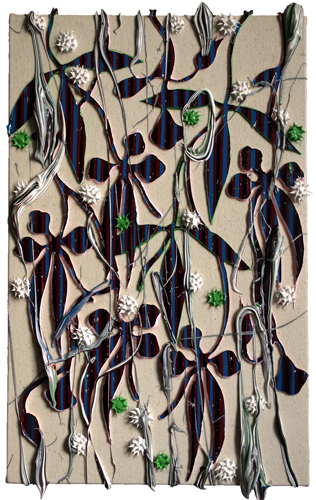
Something Other than the Obvious
2014
#474
18"x12"
